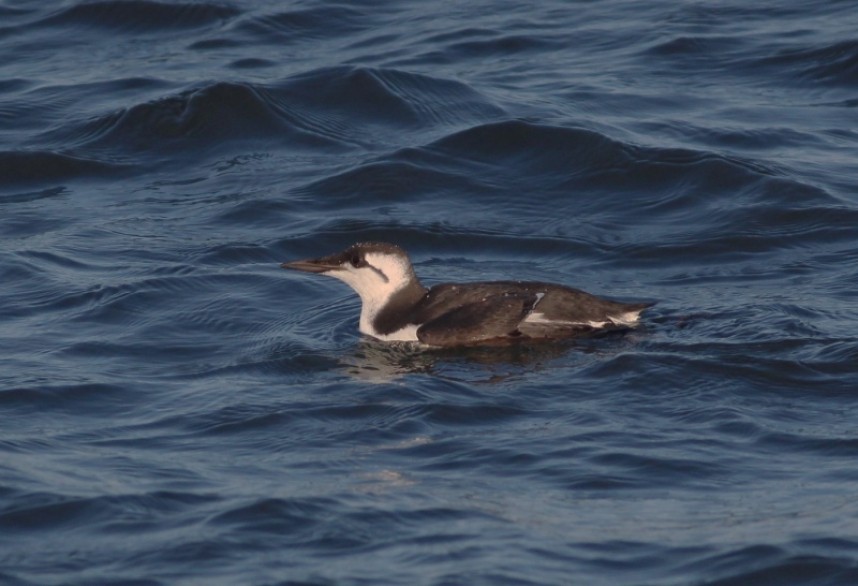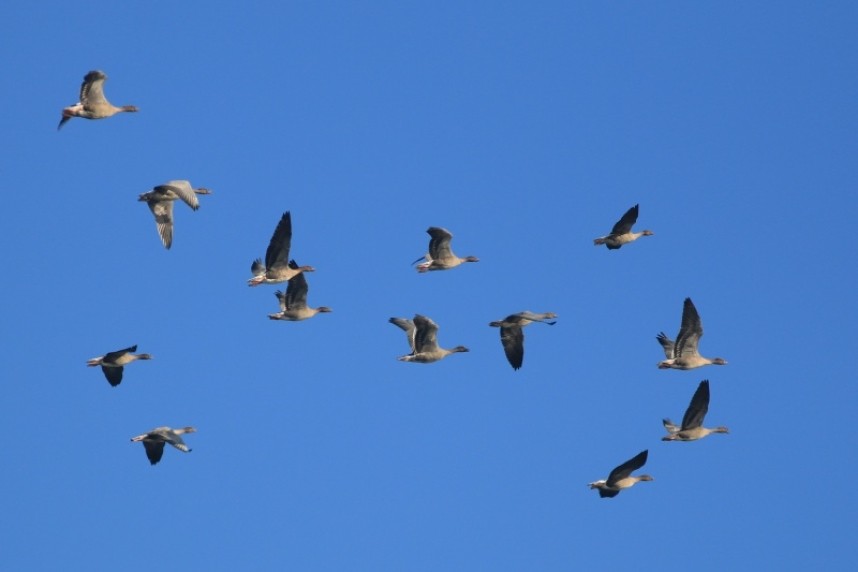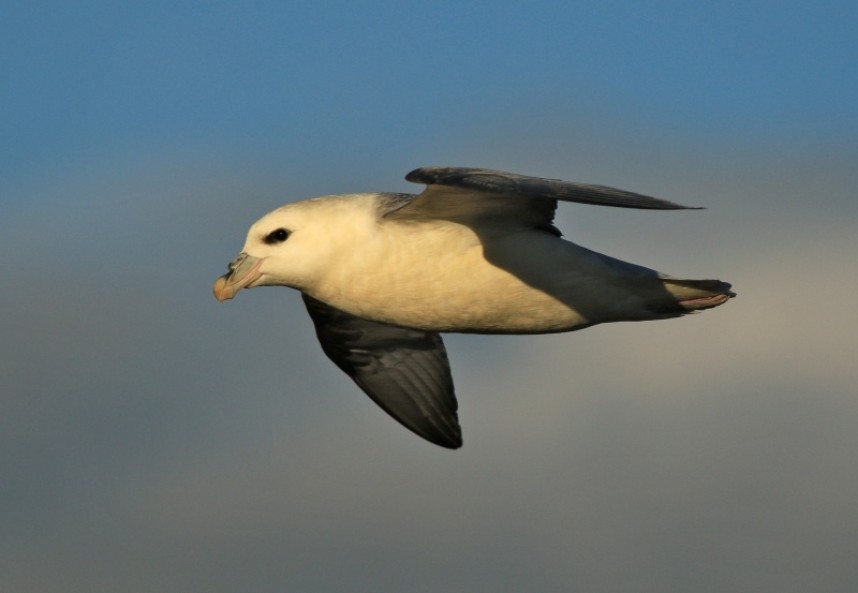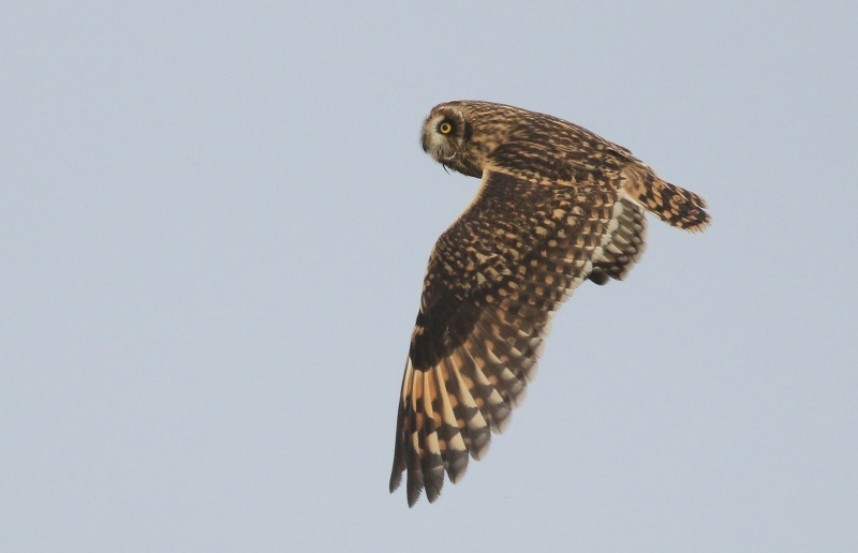Where to Winter Wander – Bempton Cliffs
In the second of the series, Mark looks at a handful of the best places for a wildlife-themed winter wander on the Yorkshire coast and beyond. This time, we're visiting the mighty Bempton Cliffs….
Many will know of Bempton Cliffs because of its legendary (and wonderfully accessible) seabird colony – a maelstrom of sights and sounds (and indeed smells – mmm!) in the spring and summer. But by autumn, most of the seabirds are long gone, spending the off-season way out on the ocean waves – so what's the point of visiting in winter?

Common Guillemot © Mark Pearson
Well, there are many reasons, but to begin with, because it's a truly magical place. By any standards, the views are breathtaking, in all directions – whether along the cliffs towards Speeton (to the west), Flamborough (to the east), across the bay to Filey, or out over the North Sea, the panorama is spectacular, and none more so than in winter.

Pink-footed Geese © Mark Pearson
It's also the best time of year to visit if you're a fan of peace and quiet. Bempton's popularity in the summer months is understandable (and wonderful!), but it can get pretty manic – in the winter, however, you're guaranteed a more relaxed, genteel wander there, especially if you visit in the morning or evening.

Northern Fulmar © Mark Pearson
And then there's the birds and wildlife, of course, both on land and offshore. While the vast majority of breeding seabirds are enjoying the freedom of the seas, there are always some to enjoy: Gannets are often present in variable numbers in the winter (although usually offshore); various gulls will be cruising the clifftops (Herring and Great Black-backed being the commonest, but look out for Black-headed, Common, and the off chance of rarer species such as Glaucous, Iceland and Little); Fulmars are not unusual and may even check out the cliffs; while auks – Guillemots in particular – have a peculiar habit of doing the same, seemingly randomly, on certain days – so don't be too shocked if the empty ledges are suddenly, temporarily re-occupied!

Rock Pipit © Mark Pearson
The best place to enjoy the seabirds is of course from the many excellent viewpoints along the clifftop path (some of which are accessible, from the visitor centre, for wheelchairs, motability scooters etc.). This is also where you should be on alert for cetaceans – while there are better times of year to try and catch sight of a whale, Harbour Porpoises are present year-round and Bottlenose Dolphins are increasingly regular in the winter months (see the last blogpost for ID tips).
It's easy to overlook the wealth of possibilities on dry land, particularly when birds are generally quieter and less obvious in winter, but the habitat around the reserve is great for some relaxed, easy winter birding. The clifftop path affords excellent views of farmland in both directions, while the nature trails wind through hedgerows, mini-copses and fields, offering the chance of a good variety of species.

Short-eared Owl © Mark Pearson
Look out for geese out in the stubble – it may just be the local Greylags honking away out there, but 'proper' wild visitors in the shape of Pink-footed Geese are an increasingly regular sight here in winter, and their noisy, yapping flocks may host a scarcer White-front, Barnacle or similar.
Perhaps the most popular terrestrial species in winter are owls, specifically Barn and Short-eared. Early morning and dusk are by far the best time to catch them, although you may well bump into one or both at any time in winter, as they have to work harder in more challenging conditions to find their prey. Anywhere on the reserve could produce them – just scan carefully wherever you're out in the open. Other birds of prey include Kestrels, Peregrines and Sparrowhawks, all three of which are regularly seen throughout the winter months.

Barn Owl © Mark Pearson
Trying to avoid the attentions of the above are a variety of smaller birds. Declining dramatically elsewhere but still wonderfully abundant and ubiquitous at Bempton are Tree Sparrows – vocal, full of character, and often hanging out in noisy little gangs around the visitor centre and bird feeding station. The latter spot is also great for close-up views of a variety of the commoner garden birds (Chaffinch, Goldfinch, Blue and Great Tit, Robin, Dunnock, Blackbird etc), but look out for a Brambling, a Siskin or a Redpoll alongside their more familiar relatives.
The farmland and hedegrows within and around the reserve are well worth your scrutiny, being productive for a suite of species that are easily overlooked. Skylarks, Meadow and Rock Pipitsare often present but less obvious than the flocks of Linnets and Goldfinches swirling around the rougher, seed-rich areas, and it's here – as well as in the tops of hedges – that you'll find both Reed Buntings and Yellowhammers; keep a close eye out, too, for the larger and scarcer Corn Bunting.

Snow Bunting © Mark Pearson
Last but not least, a careful checking of the clifftop paths (as well as the neighbouring fields) in winter may produce either Snow or Lapland Buntings, although neither are 'reliable' and it's worth checking with the on-hand staff for recent sightings; this applies to anything else of note that's been seen over recent days, and the volunteers are always happy to help and update you what's around.
Further information: The reserve is open dawn til dusk every day. Check https://www.rspb.org.uk/days-out/reserves/bempton-cliffs for opening times of the visitor centre and toilets, and to book wheelchairs and mobility scooters.
YCN Birding and Wildlife Guide
To book Mark as your bespoke guide for here and other locations, please email or call us!



 Back to Blog
Back to Blog
